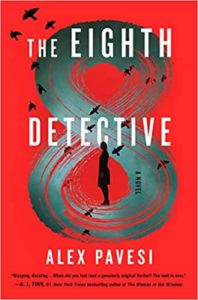Anthony Horowitz: The Twist of a Knife
 Anthony Horowitz, one of the finest practitioners of the traditional detective novel, brings us a new installment in his series where Anthony Horowitz himself is the detective. Or rather, he’s the writer who solves crimes with an actual detective named Hawthorne, and then writes books about their investigations. It’s a very meta concept and it only took me a minute to adjust to it. In this alternate world where Horowitz the author is Horowitz the character, he’s written a play.
Anthony Horowitz, one of the finest practitioners of the traditional detective novel, brings us a new installment in his series where Anthony Horowitz himself is the detective. Or rather, he’s the writer who solves crimes with an actual detective named Hawthorne, and then writes books about their investigations. It’s a very meta concept and it only took me a minute to adjust to it. In this alternate world where Horowitz the author is Horowitz the character, he’s written a play.
The play is being produced, starting out in smaller cities and at last – moving to London. As the book opens, Anthony has told Hawthorne he doesn’t plan to write any more books; and he’s very much looking forward to opening night of his play. It’s a small cast and all of them head out to celebrate afterwards at a party thrown by the producer, and the cast and Anthony end up back at the theater’s green room waiting on reviews. One comes in early, and it’s a nasty one. The cast trickles out, in shock.

